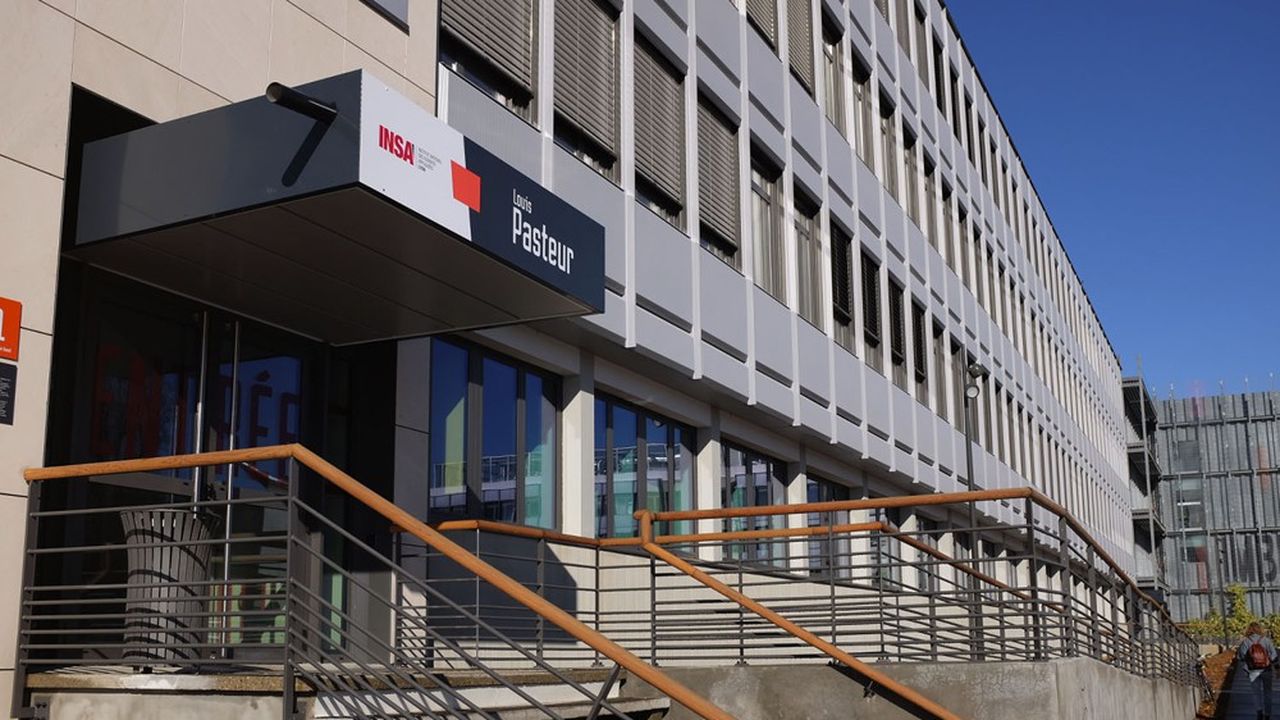Posted on Feb 26, 2019 2021 at 7:25Updated Feb 26, 2019 2021 at 11:56
Twelve years that it lasts. T he renovation of the scientific quarters of the Doua university campus in Lyon-Villeurbanne has been launched – on paper – since 2009. Unpleasant surprises regarding the fire stability of buildings constructed from 1957 until the 1970s by the architect Jacques Perrin-Fayolle delayed the start-up. And forced to downsize to stay within the budget of 170 million euros granted by the campus plan and local communities.
The client, the University of Lyon, signed a contract with Eiffage in 2016 for design, operation and maintenance (Crem) for 22 buildings, instead of 30. This still concerns 140,000 square meters, a third of the total. total area of the premises, deemed to be “refrigerators” for the 30,000 users, including 25,000 students. The discomfort of the Doua is legendary in the university community.
HQE certified
Since then, the HQE-certified renovation has progressed well: 13 buildings completed, 4 in progress and 5 to come. The end is scheduled for 2023, eighteen months late. The rehabilitation concerns the envelope of buildings, facades and roofs, and sometimes floors, to improve insulation and comfort. “The 40% gain on the heating bill will not be net in terms of energy consumption, impacted by the installation of aeration, ventilation and cooling systems”, explains Nicolas Coureau, director of the real estate strategy division at the University of Lyon.
An organizational feat
“It is not a viaduct construction, there is no technical feat. But it is an organizational feat ”, he said, to carry out the work on an occupied site. Impossible to empty these research buildings filled with expensive and non-movable equipment, lasers, spectrometers, hoods, benches, optical instruments … “Who can’t stand the slightest vibrations and dust!” “
It took “Careful management of the work, on a case-by-case basis”, to fix the interventions in the schedules of the laboratories and ranges of examinations, and to ensure the strict respect of the schedules of the two sides, Eiffage and scientists. For Nicolas Coureau, “This is the key to success in tackling large-scale and occupied real estate assets”. Even when possible, buffer buildings would make it necessary to spread these programs over twenty or thirty years, “Unreasonable deadlines”.
He regrets the failure of the open-air laboratory component of this emerging ecocampus, which was supposed to give rise to sustainable development experiments. “The imperatives of work – action, efficiency – and research – reflection, questioning – have proven to be incompatible. “ The mineral environment of the Doua should improve with 20 million euros (out of 200 in the end) devoted to landscaping, 8,000 square meters of green roofs, and rainwater collection on the 22 rehabilitated buildings.
20th century architecture preserved
L’architecture, “Of heritage interest for the 20th century”, will be preserved. For the ten buildings with metal structures and facades of Insa, which also bear the signature of Jean Prouvé, the exterior panels were entirely removed, remade on an industrial scale and almost identically in a regional workshop, but with better thermal performance, double glazing and solar shading.
The other buildings, in concrete, were isolated from the outside and covered with monochrome panels faithfully respecting the lines and volumes, but applied with invisible fixings used for the first time on this site.
–

